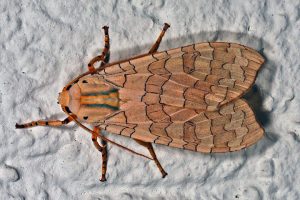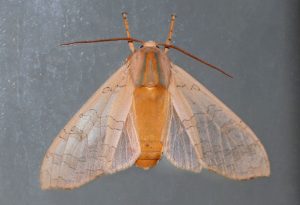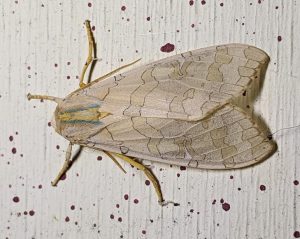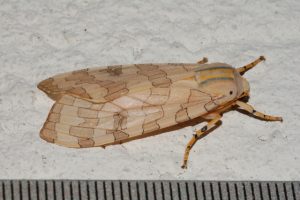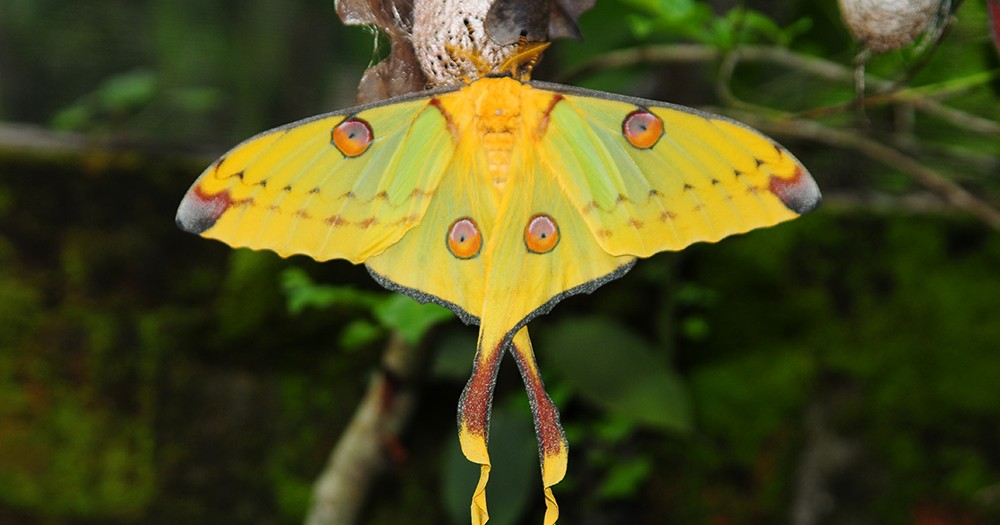Banded Tussock Moth (Halysidota tessellaris)
Banded tussock moth is part of the Erebidae family native of different parts of North America. They get their name because of their hairy appearance and banded pattern on their wings.
pwconserve.org
Scientific Classification
- Family: Erebidae
- Genus: Halysidota
- Scientific Name: Halysidota tessellaris
Description and Identification
Caterpillar
They have a yellow, orange, or dark gray body and bright red head capsules, alongside tufts of long hair on the front and rear end. They are 3.5 cm long, and mostly occupy the upper surfaces of the leaves of their host plants.
Pupa
The pupa remains enclosed in a gray cocoon covered with the larval hairs.
Adult Moth
Sexual Dimorphism: Not prominent
Color and Appearance: When the wings are opened, they appear light brown with beige bands on the upper part, bordered in black. When the wings are closed, the color and pattern remain the same.
The body is hairy yellow, while the thorax is marked with bluish-green lines on the upper side.
Average Wingspan: 4 – 4.5 cm
Flight Pattern: Erratic
Seasons: May – August
Eggs
The oval, pale green eggs occur in clusters on the lower side of their host plants’ leaves.
Quick Facts
| Other Names | Pale tiger moth, tessellated hallisidota |
| Distribution | Throughout North America covering southern Canada, Texas, and central Florida |
| Habitat | Meadows, shrublands, grasslands |
| Predators | Birds, bats |
| Lifespan of Adults | Not recorded |
| Host Plants | Birch, ash, blueberry, alder, chestnut, hazel, elm, grape, oak |
| Adult Diet | Nectar |
Scientific Classification
- Family: Erebidae
- Genus: Halysidota
- Scientific Name: Halysidota tessellaris

